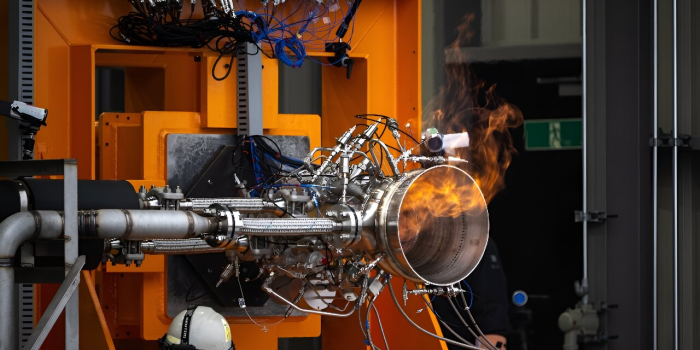In a stellar leap for sustainable space exploration, Interstellar Technologies Inc (IST) has turned the unconventional into the extraordinary by successfully testing a prototype rocket engine fueled by liquid biomethane derived from cattle manure.
IST’s recent “Static Fire Test” for the ZERO launch vehicle rocket at the Hokkaido Spaceport’s Launch Complex-0 showcased the potential of liquid biomethane (LBM) sourced from local dairy farms—specifically, the humble yet powerful cow dung. The 10-second experiment, marked by a mesmerizing blue-and-orange flame, not only signifies a milestone in sustainable rocket fuel but also echoes the ingenuity of harnessing nature’s resources for space exploration.
Partnering with Japan-based Air Water, IST has established a circular supply chain in Hokkaido’s Tokachi area. Here, biogas from livestock manure undergoes a transformative journey into LBM, highlighting the marriage of innovation and sustainability. Local farmers, armed with on-farm equipment, play a crucial role in converting cattle manure into biogas, setting the stage for the eco-friendly propulsion of rockets.

Beyond biomethane, the ZERO rocket adopts liquid methane as a propellant, aligning with industry leaders like SpaceX. This strategic choice offers cost-effectiveness, enhanced fuel performance, and a reduced environmental footprint. IST’s simplified engine design, reducing components by one-tenth compared to conventional engines, reflects a commitment to affordability and efficiency, mirroring SpaceX’s groundbreaking approach.
The pintle injector, a pivotal component controlling propellant delivery, underscores IST’s dedication to optimal combustion performance. Collaborative efforts with Tokyo University and JAXA further refine ZERO’s combustion chamber, marking a significant stride toward the 2025 liftoff date for the small satellite launch vehicle rocket.

Looking beyond the skies, IST envisions the competitive pricing of ZERO—less than 800 million JPY per launch in mass production—meeting the surging demand for small satellite launch services, particularly in Asia and Oceania. The success of this endeavor isn’t just a technological triumph; it also holds the promise of cattle manure contributing to carbon neutrality, showcasing how space exploration and environmental responsibility can go hand in hand.
In essence, IST’s journey from cow pasture to cosmos not only defies gravity but also exemplifies the ingenious fusion of agricultural remnants and cutting-edge space technology—a stride toward a more sustainable and exciting era in space exploration.


